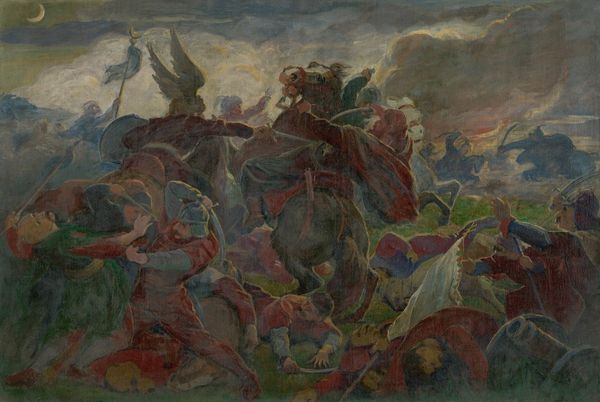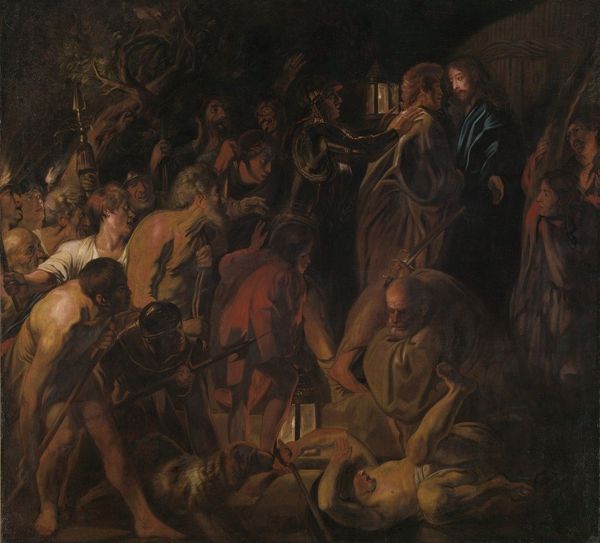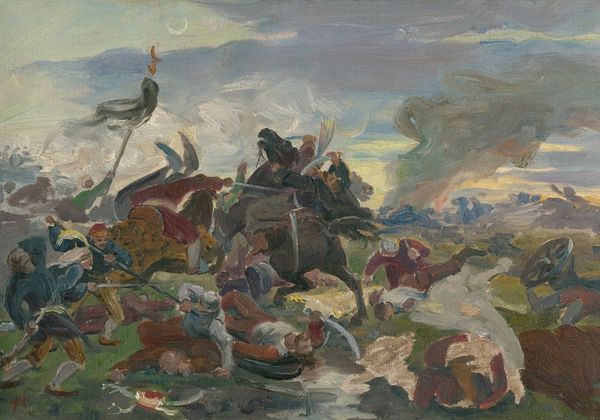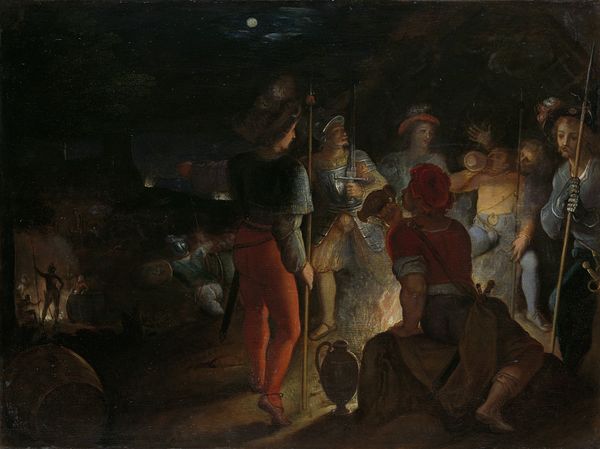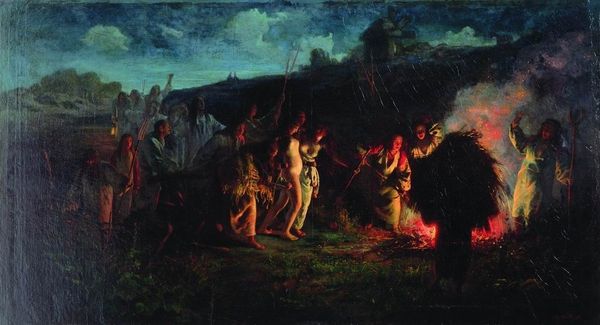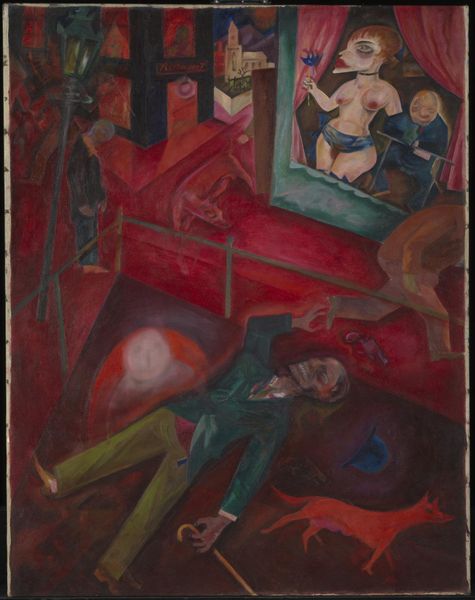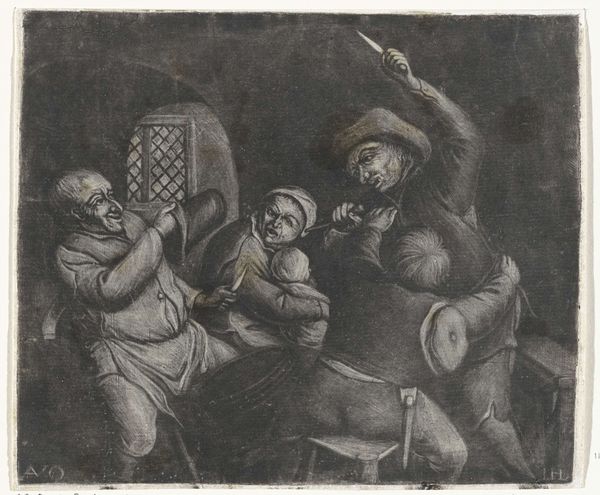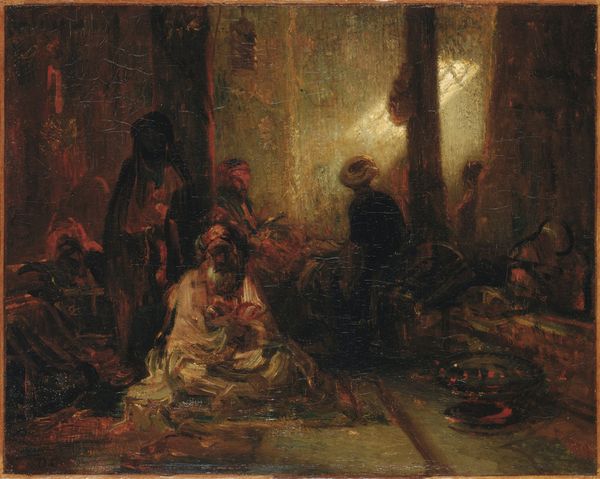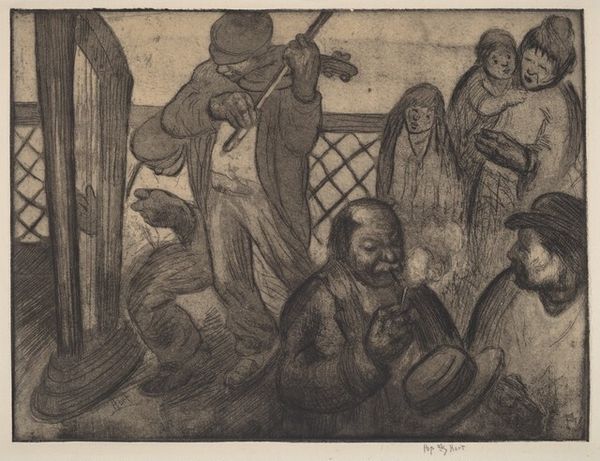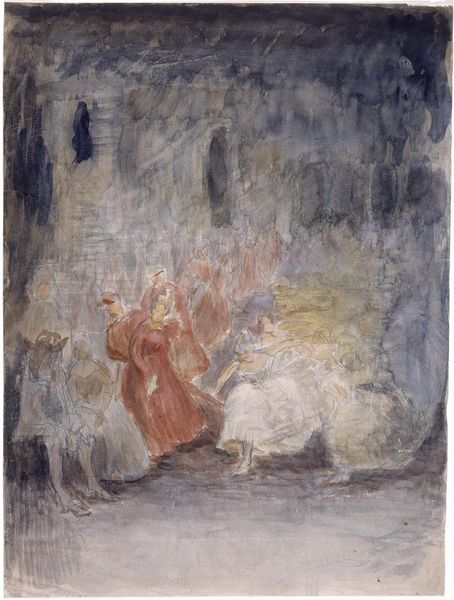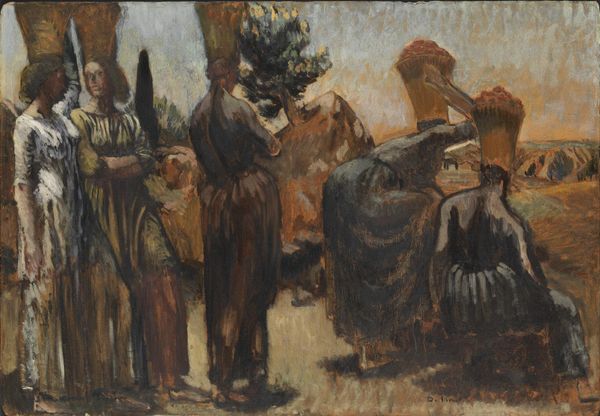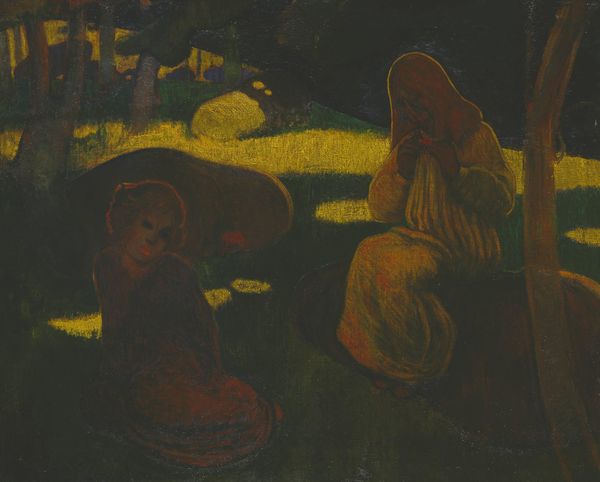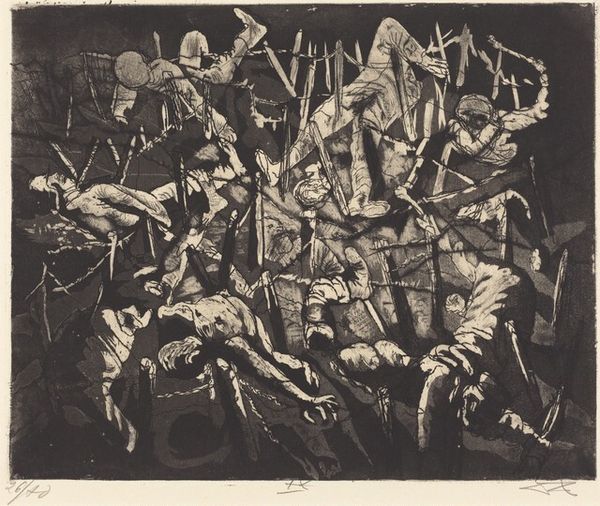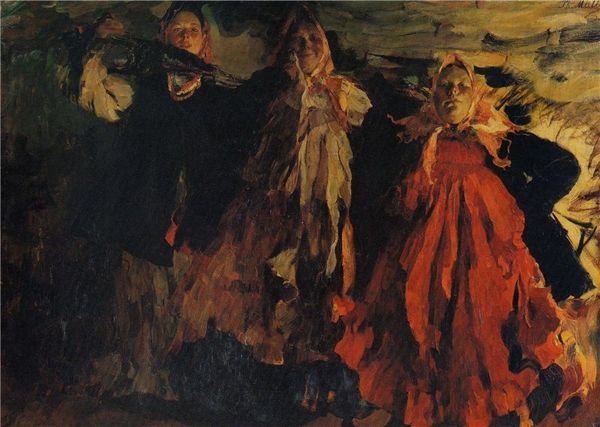
Copyright: Public Domain: Artvee
Editor: We're looking at "Dance of the Cripples" by Walther Gamerith, probably from the 1940s. It looks like oil paint and gouache, very dark and moody, but the figures are contorted in almost comical ways, despite what appears to be a tragic scene. How do you interpret this work? Curator: Note the use of line. Gamerith’s brushstrokes aren't just depicting form, they’re creating an atmosphere of anxiety, consider for instance, how the artist creates rhythm using the upward thrust of the arms juxtaposed with the rounded belly of the drummer at the right of the composition. The monochromatic tonality evokes a sense of constriction; does it suggest a psychological enclosure of the subjects? Editor: I see what you mean. There's something uncomfortable about the limited palette that actually enhances the unsettling feeling. Is that contrast between dark and light, a typical formal strategy within Expressionism? Curator: It is definitely central to its poetics, and yet, consider the spatial ambiguity—how planes intersect rather than recede, making depth and proximity difficult to resolve. Where do you perceive the locus of attention within the image? Is it a balanced composition, or are we pulled in multiple directions? Editor: My eye goes to the drummer because he's in the foreground, but then the figures behind him seem to be fleeing into the dark, chaotic background. It is visually unbalanced, it has a sense of unresolved tension to it. Curator: Indeed. Gamerith’s work with shape, with tonality, and compositional choices yields a visually provocative and psychologically disquieting result, one that effectively defies aesthetic conventions. Editor: I hadn’t considered that breakdown of spatial depth so consciously before. This examination highlights that even potentially representational elements can contribute to pure formal unease, making us think and consider the purpose behind those formal choices. Curator: Absolutely. Analyzing those structural features in a work helps us look past our first impressions, guiding us into an alternative reading of the whole piece.
Comments
No comments
Be the first to comment and join the conversation on the ultimate creative platform.
